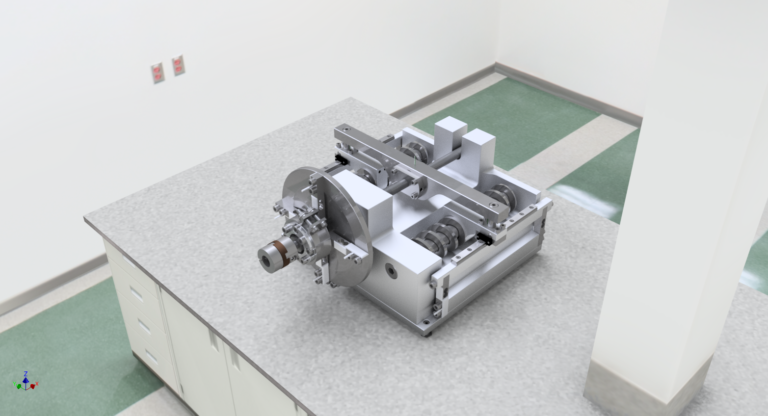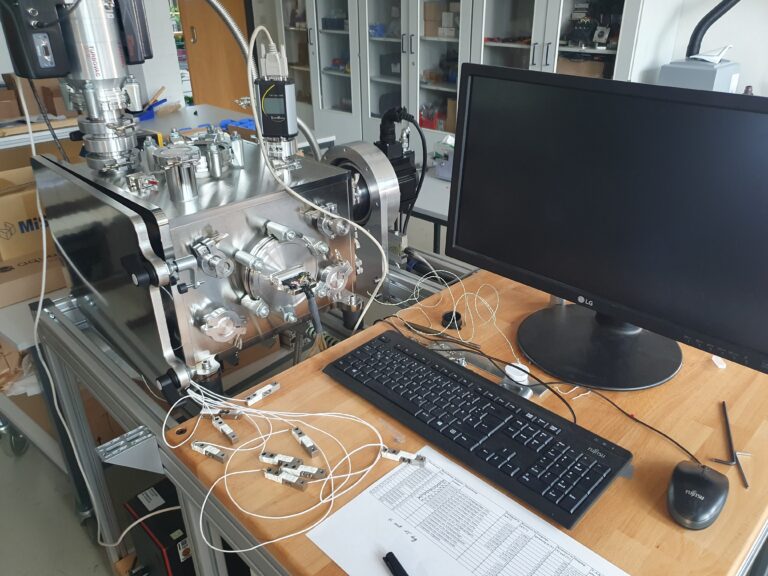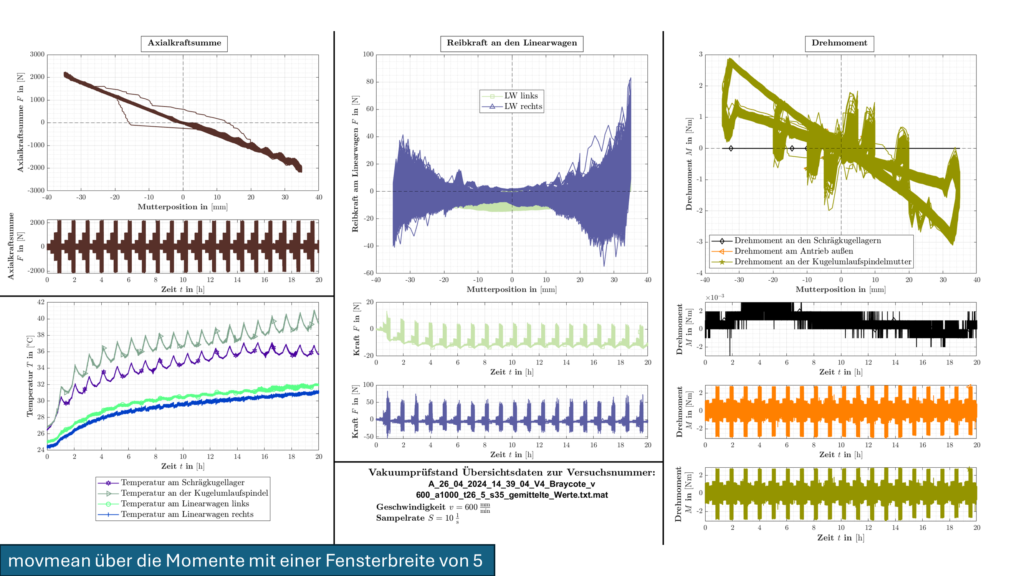Test angular contact ball bearings, linear guides and threaded spindles in parallel in a high vacuum



With the new vacuum component test bench, different construction elements can be dynamically stressed in a test cassette under high vacuum conditions in continuous operation.
Specifically, two angular contact ball bearings, two linear roller guides and a ball screw are driven in a closed power flow by a servo-electric motor located outside the vacuum chamber. The components work against coil springs during the lifting movement, which leads to a dynamic load on the components. Different forces can be applied using different strokes.
The frictional forces or frictional torques and temperatures of the individual components can be measured separately. The test is completed when one component fails.
Maximum force on the spindle and roller bearings
2800 N
Maximum vacuum
8 x 10-8 mbar
Maximum stroke
80 mm (+/- 40 mm)
Maximum temperature
Current room temperature (in expansion stage 120 °C)
Maximum shaft/spindle speed
1000 1/min
No standard available yet.
The test is to be adopted as a lubricant specification by a large technology group.
Voltage
400 V
Frequency
50 … 60 Hz
Power
x kVA
Friction measurement (forces and torques)
Axial force on angular contact ball bearing
Frictional torque on angular contact ball bearing
Frictional force on the linear guides
Total frictional torque on the motor
The frictional torque on the ball screw is calculated from the differences
Temperature measuring points
6 Temperature trace measurements on the individual components and in the chamber (type K)
Rotary speed
Motor encoder
- Customized measuring cassettes and setups on customer request
